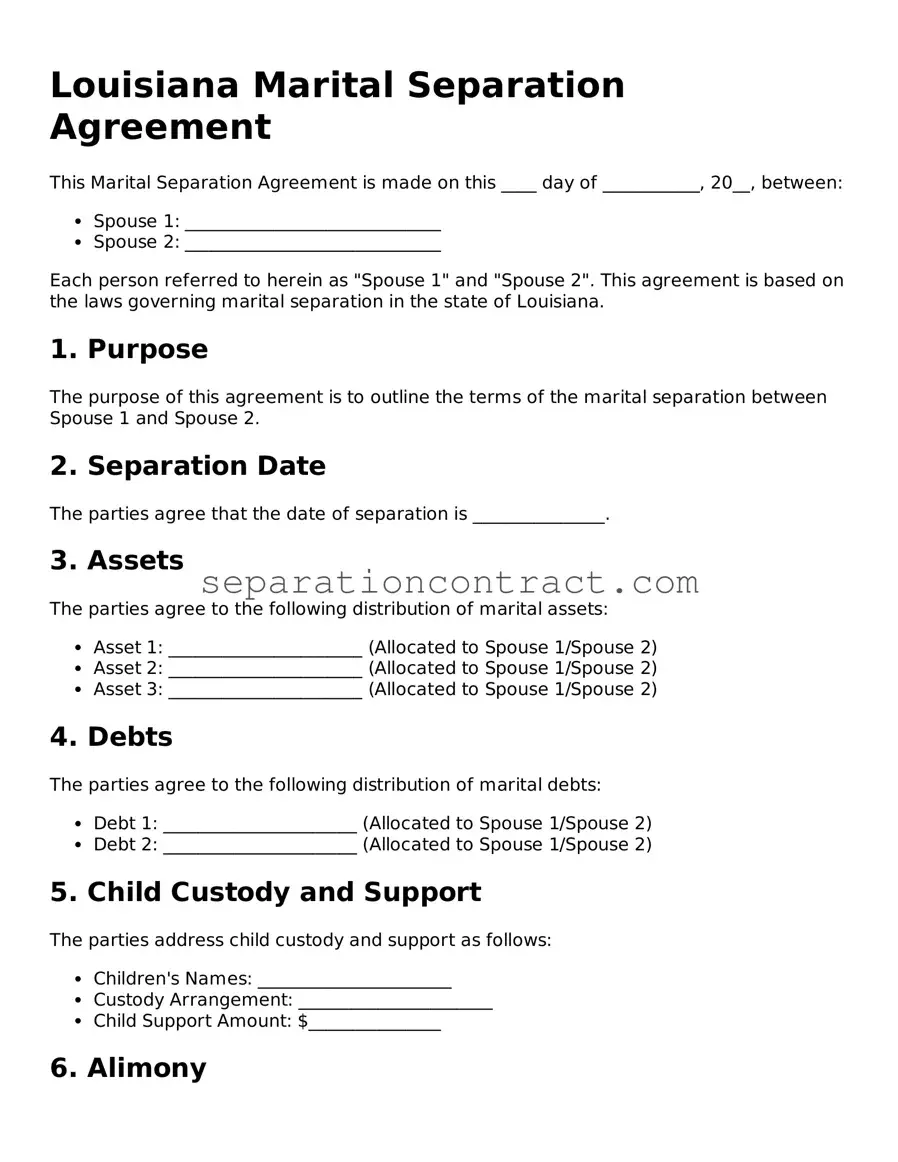Filling out the Louisiana Marital Separation Agreement form can be a daunting task. Many individuals make common mistakes that can lead to complications down the line. One frequent error is failing to provide complete and accurate information. Every section of the form requires specific details about both parties. Omitting information or providing incorrect data can delay the process and create confusion.
Another mistake is not understanding the terms of the agreement. Individuals may sign the document without fully grasping the implications of what they are agreeing to. It is crucial to read and comprehend each section. If there are any uncertainties, seeking clarification is advisable before proceeding.
People often neglect to include all assets and debts. It is essential to list everything owned or owed by both parties. Incomplete disclosures can lead to disputes later, as one party may claim they were unaware of certain assets or liabilities. Transparency is vital in these agreements.
Additionally, some individuals fail to consider the tax implications of their separation. Assets may have different tax consequences, and overlooking this can result in unexpected financial burdens. Consulting a tax professional can provide valuable insight into these matters.
Another common oversight is not addressing child custody and support issues adequately. If children are involved, the agreement should clearly outline custody arrangements and financial responsibilities. Failing to do so can lead to misunderstandings and conflicts in the future.
People sometimes forget to date the agreement. An undated document can create ambiguity regarding when the terms take effect. Including a date ensures clarity and helps establish a timeline for the separation.
Moreover, individuals may overlook the need for notarization. Many legal documents require notarization to be considered valid. Not having the agreement notarized can render it unenforceable in court.
Finally, some parties may not seek legal advice before finalizing the agreement. While it is possible to complete the form independently, consulting with a legal professional can provide guidance and help avoid potential pitfalls. Legal expertise can ensure that the agreement is fair and meets all necessary legal requirements.
